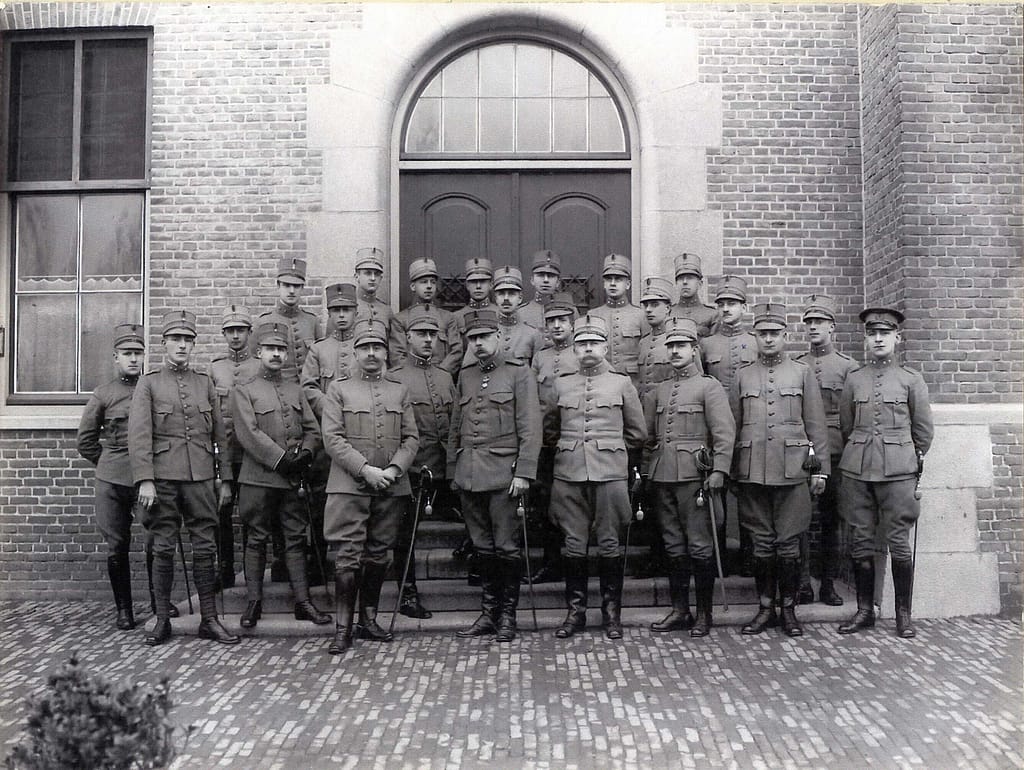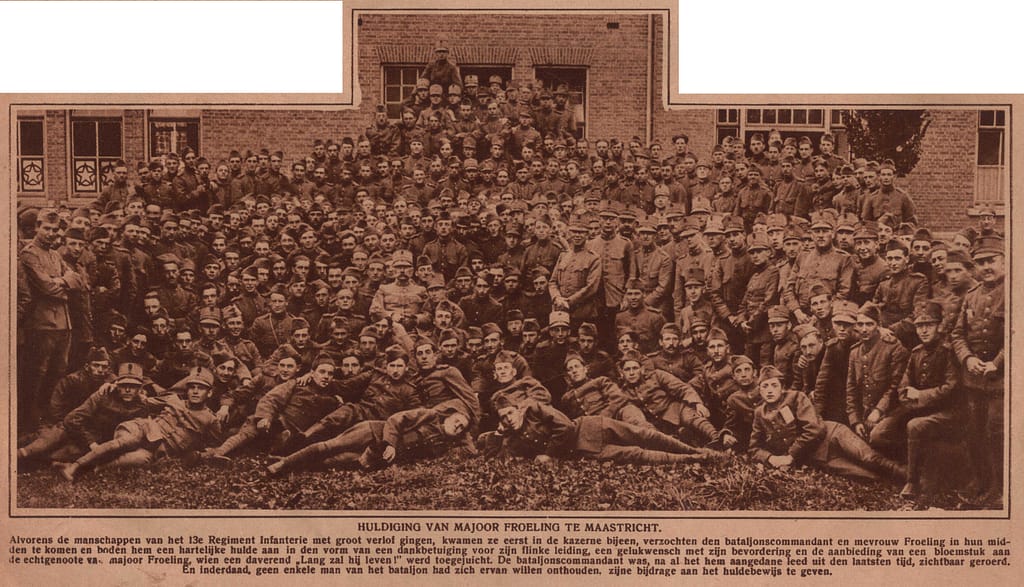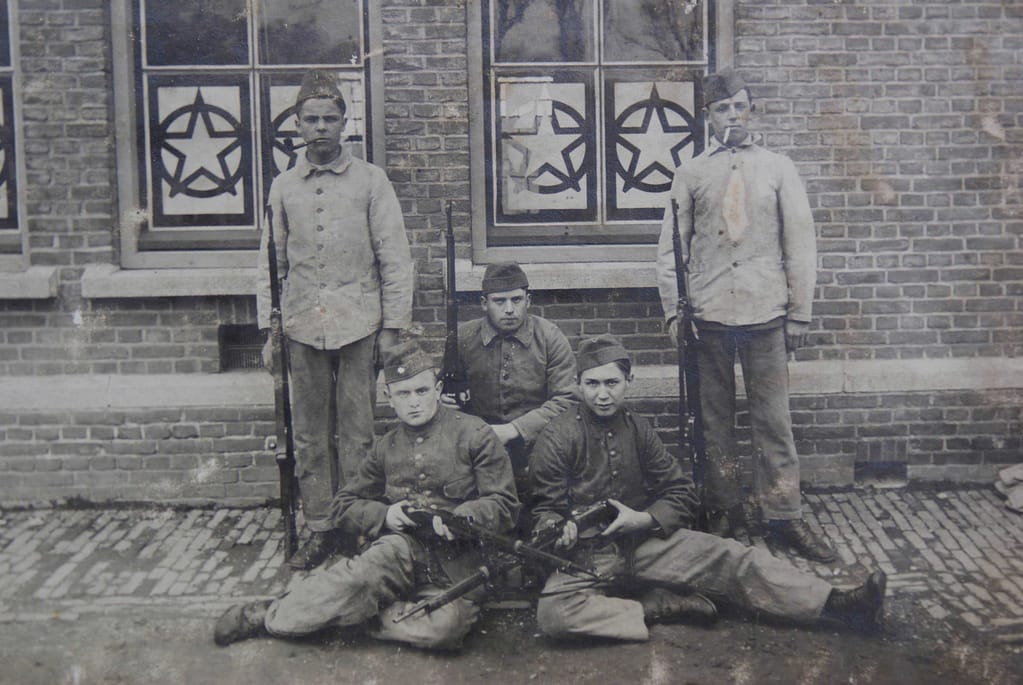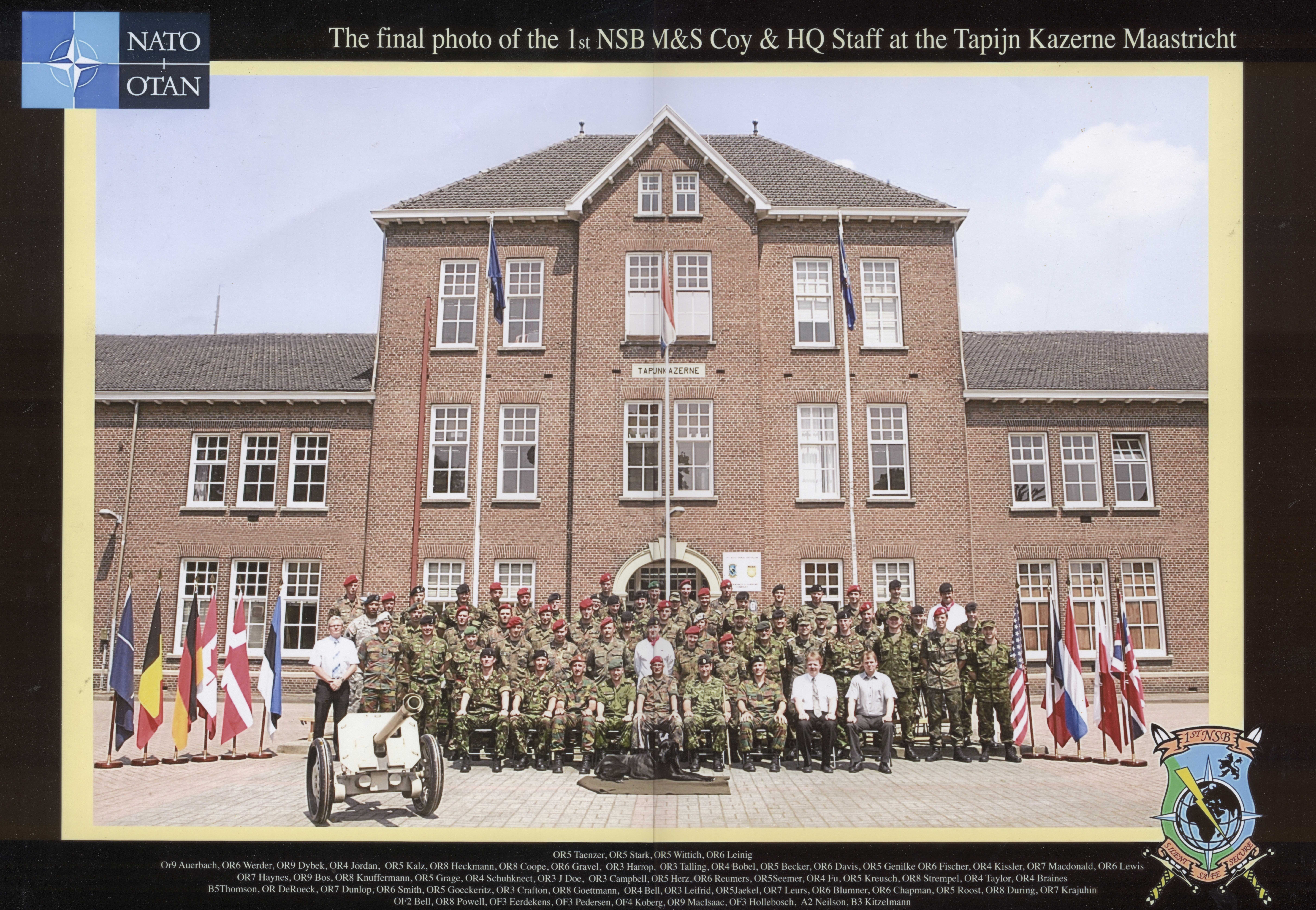During the war, the Germans put the barracks to use and, after the war, the barracks were used as the training location for a number of battalions that were deployed in the Dutch East Indies to restore Dutch authority there.
Starting in 1950, conscripts of the Menno van Coehoorn regiment were trained here and, in 1953, the Chassé regiment was as well. The training institute was then called the Fourth Depot Infantry. Every two months, a group of conscripts began their training. This remained the case until NATO took over the barracks in 1967 to house liaison units for AFCENT in Brunssum.
The last NATO troops left the barracks in 2010 and, in 2013, the site and its buildings were transferred to the University of Maastricht, the municipality of Maastricht, and the province of Limburg. The university will use the buildings for educational purposes, and the municipality has now partly redeveloped the site for public use. Some of the old buildings have now been demolished; the listed buildings will be conserved and connected to one another. One new accent building will be added that fits within the structure.
The 13th infantry regiment
The Thirteenth Infantry Regiment (13IR) was set up in 1913 and partly housed in the Pieters Barracks and the Bonnefanten Barracks in Maastricht. During the First World War (1914-1918), the men of 13IR are deployed at the Belgian border in West-Brabant. When the regiment returned to Maastricht in the spring of 1919, it could almost immediately move into the new barracks in the Kommen. Cuts in the defence budget in the 1920s meant that there were only a few training and education companies left in Maastricht. Conscripts from the surrounding area received their first military training at the barracks. In 1930, three more companies were added. When international tension increased in the years that followed, the building of a second new barracks in Maastricht was even discussed. However, these plans were not set into motion.
Meanwhile, the relationship between the regiment and the city grew and Maastricht became the city of the thirteenth. The regiment’s 125th anniversary in 1939 was celebrated on a grand scale. The regiment, founded in 1913, continued the tradition of the Second Infantry Regiment, which was founded in 1814. Maastricht, city of the thirteenth, was in a festive mood for days on end.
The outbreak of the Second World War (1940-1945) put an end to the 13IR’s stay in Maastricht.
1945 – 1949 from Tapijn to the East
In May 1945, the weapons in Europe fell silent, and, with the capitulation of Japan in August, the end of the Second World War was a fact. In the Dutch East Indies, present-day Indonesia, there was no central authority at that time. This led to anarchy, unrest, and wholesale massacre. The Dutch government, therefore, decided to send troops to restore order, peace, and authority. Initially, this task was carried out by volunteers, but, from 1946 on, conscripts were also used.
From 1946 to 1949, young men are trained at the Tapijn Barracks to perform this task. The first to leave were the soldiers of the Maria battalion Sterre der Zee, departing for Central Java in 1946. The battalion was officially known as the 3rd battalion of the 14th infantry regiment (3-14IR) and had the Maastricht city star in its banner. A year later, following a prayer route led by Bishop Lemmens, the Bokkenrijders (4-6IR), or Buckriders, were deployed in the first major police action against the freedom fighters in the East Indies. The Black Panthers (5-6IR) were the last battalion to leave in 1948. The following year, a number of machine-gun companies were trained at the Tapijn Barracks and were added to various battalions in the Dutch East Indies.
During their training, the recruits were a prominent presence within the city and its surroundings. They practised in Brunssum, Amby, and on Mount Saint Peter, and added lustre to parades, processions, and other official occasions. Upon their farewell and departure for the distant Indies, the whole city sympathised.
1950 – 1967 Fourth Depot Infantry
The Mortar Regiment Menno van Coehoorn was set up in Maastricht on 1 July 1950. From then on, the training of conscripts for this regiment took place at the Tapijn Barracks. After their arrival, they were trained as mortarmen in about half a year. In this period, the Tapijn Barracks were also the birthplace of the Kachelpiepers, the prince’s guard that accompanies the prince of the Maastricht Carnival.
This new era also placed new demands on the barracks complex. Old buildings were updated and new buildings were needed: a garage, a workshop, a lecture and dorm building, an officers’ mess, and a new canteen. This put the survival of the deer park next to the barracks in jeopardy. It would have to disappear completely or partially in order to execute the expansion plans. When this became known in the city, there was a great deal of commotion. Eventually, the military decided to construct the new buildings largely within the existing fences.
When the army was reorganized, the Chassé infantry regiment also established a training programme at the barracks in 1953, and from then on the complex was known as the Fourth Depot. Every two months, a class of conscripts began their training with one of the two regiments.
The training programmes remained in Maastricht until January 1967, when the last conscripts bade farewell to the city with a parade on Vrijthof square.
1967 – 2010 Tapijn goes international
In 1966, French President Charles de Gaulle decided no longer to participate in the NATO chain of command. This meant that the alliance would have to find a new location for all the headquarters that had hitherto been located in France. That is how the Headquarters Allied Forces Central Europe (AFCENT) came to Zuid-Limburg. The site of former state mine Hendrik in Brunssum was chosen for the head office. Secondary establishments were set up in the buildings of state mine Emma in Hoensbroek and in the Tapijn Barracks in Maastricht.
Instead of young Dutch recruits, now mainly English, German, and American military personnel lived and worked in the buildings. The British 227 Signal Squadron was the first communications unit to take up residence in the barracks in 1967, and the focus in Maastricht would remain on communications in later years. The headquarters of the third American Army Corps was set up in one of the buildings of the barracks. This was an outpost for American units that could be deployed here from America in the event of a crisis in Europe. In 1984, a secure communications bunker was built on site.
On 24 June 2010, the last soldiers of the 1st NATO Signal Battalion left the barracks complex. At the time, the headquarters in Brunssum had been known as Joint Force Command Headquarters Brunssum for some years. In an official ceremony, the entire complex was handed over to the State Property and Development Agency that same day.
Current status
On 1 October 2013, after a long negotiation process, the Dutch government transferred ownership of the barracks to the University of Maastricht, the province of Limburg, and the municipality of Maastricht. The university and the provincial government own the buildings. The municipality became the owner of the undeveloped space. In 2014, the three parties worked together with the city on a long-term plan for the Tapijn Barracks. This plan stipulates that the buildings will have an educational function and that a catering function will be added for students and visitors. The area should be given an open park-like character so that the City Park, the Aldenhof Park, and the area between the Tapijn barracks form a continuous green belt.
The plan also calls for open connections with the city centre and the Villapark, and the preservation of the historic character of the buildings and the animal park has been insisted upon.
In 2015, the university and the municipality issued a multifaceted design brief for the future use of the buildings, the addition of new programmes, and the redevelopment of the barracks site. The elaborate design by architectural firm LIAG from The Hague won the assignment
for the transformation of the Tapijn Barracks.
In LIAG’s design, there is a strong connection between the buildings and with the park landscape. The lines of sight of the pavilion structure of the former barracks site were the starting point. A concealed connecting building preserves the lines of sight. In addition, this substructure acts as a plinth for all of the buildings and ensures maximum flexibility of functions.
As a new eye-catcher, Tapijn will be given an accent building that is located on top of the connecting building and fits within the pavilion structure.
In addition to LIAG architects and construction consultants, the integrated design team includes: Bosch Slabbers (landscape architecture), VIAC (installation advice), restoration architect Jelle de Boer, DGMR, construction consultancy firm Van der Veen for the construction, and urban planner Frits Bokelman.











